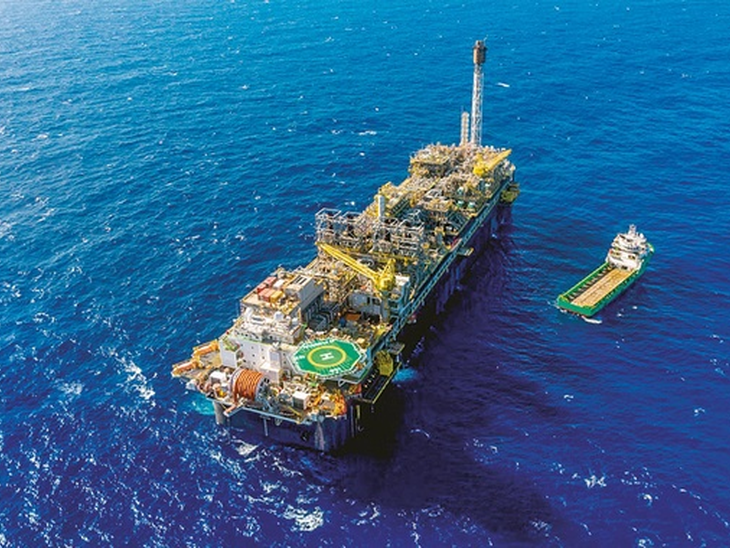
T&B Petroleum/Press Office ANP

In May, national production was 3,485 MMboe / d (million barrels of oil equivalent per day), of which 2,765 MMbbl / d (million barrels per day) of oil and 114 MMm3 / d (million m3 per day) ) of natural gas.
Oil production decreased by 6.5% compared to the previous month and increased by 1.3% compared to May 2019. In relation to the production of natural gas, there was a reduction of 7.8% in comparison with April and of 3 % in comparison with the same month of the previous year. The drop in production is mainly due to the stoppage of the FPSOs Mangaratiba and Cidade de Angra dos Reis and the restriction in the production of platforms P-67, P-74 and P-76.
During the month of May, 34 fields had their respective production temporarily interrupted due to the effects of the Covid-19 pandemic, of which 16 seafarers and 18 onshore, and a total of 60 marine production facilities remained with interrupted production. In April, there were 38 fields and 66 installations with production interrupted for the same reason.
Pre-salt
Pre-salt production in May was 2,363 MMboe / d, which corresponds to 67.8% of the national total. 1.875 MMbbl / d of oil and 77.57 MMm3 / d of natural gas were produced through 115 wells. There was a 9% reduction in relation to the previous month and an increase of 12.2% in relation to May 2019.
Use of natural gas
In May, the use of natural gas was 97.6%. 48.7 MMm³ / day were made available to the market. Gas flaring in the month was 2.782 MMm³ / d, an increase of 2.1% compared to the previous month and a reduction of 43.3% compared to the same month in 2019.
Origin of production
In May, offshore fields produced 96.5% of oil and 86% of natural gas. The fields operated by Petrobras were responsible for 94.9% of the oil and natural gas produced in Brazil. However, fields with Petrobras' exclusive participation produced 41.8% of the total.
Highlights
The Lula field, in the Santos Basin, was the largest producer of oil and natural gas, registering 889 Mbbl / d of oil and 39.3 MMm3 / d of natural gas.
The Petrobras 77 platform, producing in the Búzios field through four interconnected wells, produced 155.371 Mbbl / d of oil and was the facility with the highest oil production.
The FPSO Cidade de Itaguaí installation, producing in the Lula field, through 7 wells connected to it, produced 7.694 MMm³ / d and was the installation with the highest production of natural gas.
Estreito, in the Potiguar Basin, had the largest number of onshore producing wells: 1,085. Marlim Sul, in the Campos Basin, was the maritime field with the largest number of producing wells: 67.
Marginal accumulation fields
These fields produced 254.8 boe / d, 57.8 bbl / d of oil and 31.3 Mm³ / d of natural gas. The Iraí field, operated by Petroborn, was the largest producer, with 193.9 boe / d.
Other information
In May 2020, 270 areas granted, two areas for consideration and five sharing areas, operated by 34 companies, were responsible for national production. Of these, 58 are maritime and 212 are onshore, eight of which are for area contracts containing marginal accumulations. Production took place in 6,905 wells, 492 of which were marine and 6,413 onshore.
The average API grade was 27.7, with 3.2% of production considered light oil (> = 31 ° API), 87.2% average oil (> = 22 API and <31 API) and 9.6% oil heavy (<22 API).
The mature onshore basins (fields / long-term tests in the Espírito Santo, Potiguar, Recôncavo, Sergipe and Alagoas basins) produced 100.4 Mboe / d, of which 80.6 thousand bbl / d of oil and 3.1 MMm³ / d of natural gas. Of this total, 85,300 boe / d were produced by Petrobras and 15,100 boe / d were produced by concessions not operated by Petrobras, of which: 327 boe / d in Alagoas, 3,791 boe / d in Bahia, 64 boe / d in Espírito Santo, 10,686 boe / d in Rio Grande do Norte and 203 boe / d in Sergipe.

Contact us